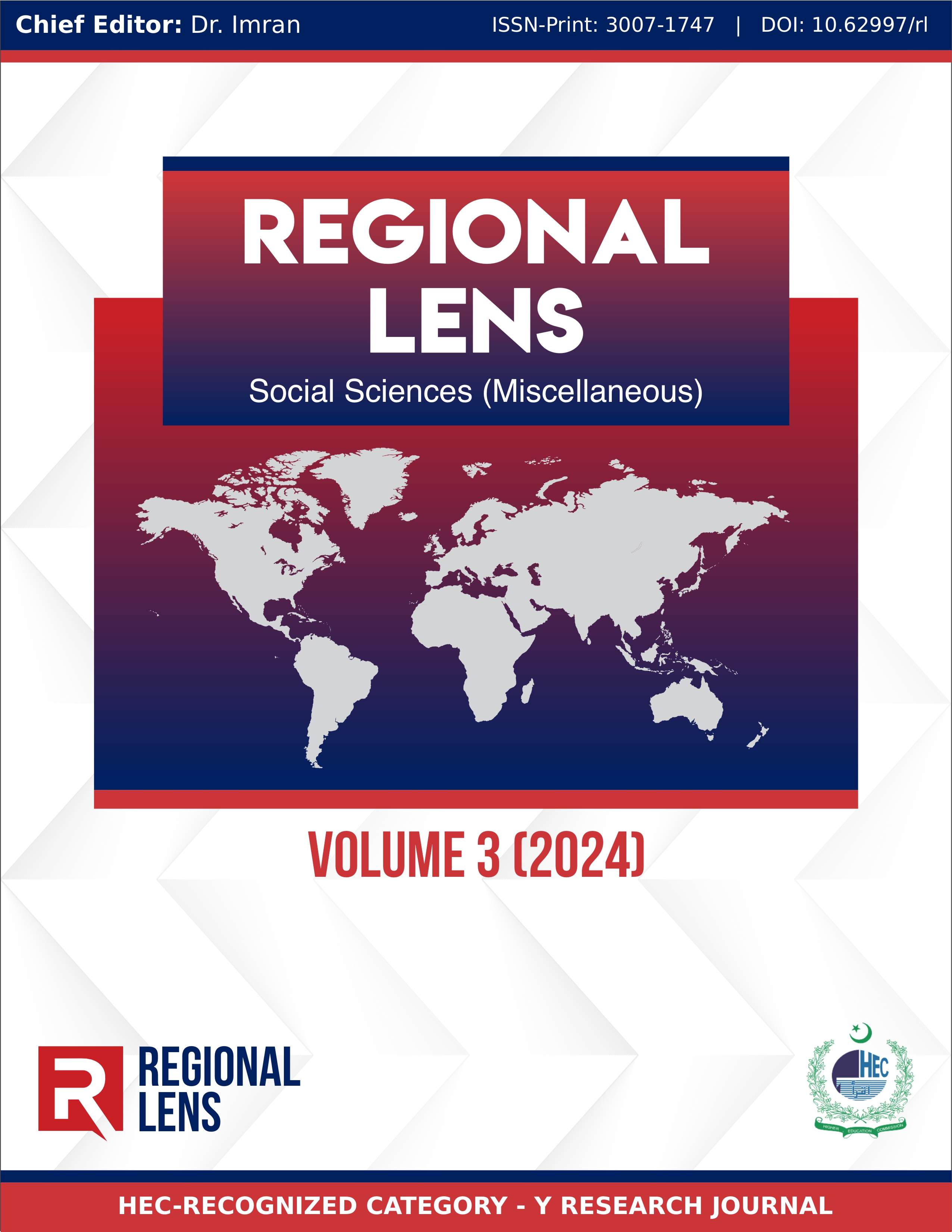Appearance of Players’ Avatars and its Influence on Social Interaction in Metaverse Gaming
DOI:
https://doi.org/10.62997/rl.2024.31028Keywords:
Metaverse Gaming, Appearance of Avatars, Social Interaction, Media Richness, Embodied Social PresenceAbstract
Avatars are the virtual identities of humans in virtual environments, and the metaverse makes them more advanced as they can move, dress, and talk like humans. As in real life, humans’ nature is social and every aspect of life is related to social interaction, same as the metaverse is designed to be the place of virtual social interaction of avatars, where humans can interact with others via controlling their avatars. Metaverse gaming provides such platforms where users can audibly talk with each other, and this research investigated the appearance of avatars as a richness of communication tool, social actors (avatars), and their influence on social interaction in virtual environments. After spending 100 hours in metaverse gaming environments as an immersive ethnography, this research explored the different visual and customizable aspects of avatar appearance that influence the quality and depth of social interactions and investigated how avatar appearance enhances players' embodied presence, immersion, and recognition of self and others in metaverse gaming. The findings revealed that Avatar customization helps players display their personalities, values, and feelings in a way that makes avatars relatable in contexts of social interaction. Moreover, when players' avatars match their physical or aspirational self-images, they experience a better sense of embodiment.
References
Cheong, B. C. (2022). Avatars in the metaverse: potential legal issues and remedies. International Cybersecurity Law Review, 3(2), 467–494. https://doi.org/10.1365/s43439-022-00056-9
Green, R., Delfabbro, P. H., & King, D. L. (2021). Avatar identification and problematic gaming: The role of self-concept clarity. Addictive Behaviors, 113. https://doi.org/10.1016/j.addbeh.2020.106694
Guegan, J., Nelson, J., Lamy, L., & Buisine, S. (2020). Actions speak louder than looks: The effects of avatar appearance and in-game actions on subsequent prosocial behavior. Cyberpsychology, 14(4), 1–16. https://doi.org/10.5817/CP2020-4-1
Hine, C. (2018). Virtual Ethnography. SAGE Publications Ltd. https://doi.org/10.4135/9780857020277
Joseph, K. (2015). Communication Of Self and Cyberlife Through Avatars in Second Life Online Communities. https://digitalcommons.utep.edu/open_etd/1078
Karhulahti, V. M., Kauraoja, V., Ouninkorpi, O., Perttu, S., Perälä, J., Toivanen, V., & Siutila, M. (2022). Multiverse ethnography: A qualitative method for gaming and technology use research. Journal of Gaming and Virtual Worlds, 14(1), 85–110. https://doi.org/10.1386/jgvw_00053_1
Ki, C.-W. C., Youn, S.-Y., & Ha, S. (2023). METAVERSE AND FASHION CONSUMERS: EXPLORING THE MEANINGS CONSUMERS ATTACH TO THE METAVERSE, AVATARS, AND DIGITAL FASHION. Global Fashion Management Conference, 209–213. https://doi.org/10.15444/GMC2023.03.03.04
Lam, K. Y. Y. L. A. A. L. L. H. T. G. (2022). Human-Avatar Interaction in Metaverse: Framework for Full-body Interaction. MMAsia ’22: ACM Multimedia Asia, Tokyo, Japan, 13 - 16 December 2022.
Lee, H. W., Chang, K., Uhm, J. P., & Owiro, E. (2023). How Avatar Identification Affects Enjoyment in the Metaverse: The Roles of Avatar Customization and Social Engagement. Cyberpsychology, Behavior, and Social Networking, 26(4), 255–262. https://doi.org/10.1089/cyber.2022.0257
Lee, J. H., Lee, T. S., Yoo, S. Y., Lee, S. W., Jang, J. H., Choi, Y. jin, & Park, Y. R. (2023). Metaverse-based social skills training programme for children with autism spectrum disorder to improve social interaction ability: an open-label, single-centre, randomised controlled pilot trial. EClinicalMedicine, 61. https://doi.org/10.1016/j.eclinm.2023.102072
Mammadov, R. (2022). Media Choice in Times of Uncertainty & Media Richness Theory in Context of Media Choice in Times of Political and Economic Crisis. Advances in Journalism and Communication, 10(02), 53–69. https://doi.org/10.4236/ajc.2022.102005
Mennecke, B. E., Triplett, J. L., Hassall, L. M., Conde, Z. J., & Heer, R. (2011). An examination of a theory of embodied social presence in virtual worlds. Decision Sciences, 42(2), 413-450. http://dx.doi.org/10.1111/j.1540-5915.2011.00317.x
Morgan, R. (2018). Virtual reality: an ethnographic study of sociality, being, and money in a multi-player online game-world. http://researchonline.jcu.edu.au/41004/
Nan, D., Sun, S., Jansen, B. J., & Kim, J. H. (2023). Beyond Avatar Coolness: Exploring the Effects of Avatar Attributes on Continuance Intention to Play Massively Multiplayer Online Role-Playing Games. International Journal of Human-Computer Interaction. https://doi.org/10.1080/10447318.2023.2278941
Oh, S., Kim, W. Bin, & Choo, H. J. (2023). The Effect of Avatar Self-Integration on Consumers’ Behavioral Intention in the Metaverse. International Journal of Human-Computer Interaction. https://doi.org/10.1080/10447318.2023.2279416
ÖZKÖK ŞİŞMAN, Ö., & BİLGİCİ, C. (2023). From Social Media to Metaverse: Evaluation of Meta Avatars Store in The Context of Avatars, Self-Presentation and Luxury Brand. TRT Akademi, 8(17), 38–65. https://doi.org/10.37679/trta.1208292
Park, J., & Kim, H.-Y. (2023). AVATARS AS COPING MECHANISMS FOR DISSATISFIED BODY IMAGE: A SNAPSHOT OF GENERATION Z CONSUMERS IN THE METAVERSE. Global Fashion Management Conference, 914–915. https://doi.org/10.15444/GMC2023.11.06.01
Park, S., Kim, S. P., & Whang, M. (2021). Individual’s social perception of virtual avatars embodied with their habitual facial expressions and facial appearance. Sensors, 21(17). https://doi.org/10.3390/s21175986
Peña, J., Craig, M., & Baumhardt, H. (2022). The effects of avatar customization and virtual human mind perception: A test using Milgram’s paradigm. New Media and Society. https://doi.org/10.1177/14614448221127258
Rashid, M., & Khan, M. (2024). Metaverse as Medium: Understanding the Revival of McLuhan’s Notion’Medium is the Message’in the Emergent Virtual Reality Landscape. Journal of Communication and Cultural Trends, 6(1), 87–108. http://dx.doi.org/10.32350/jcct.61.05
Rashid, M., Zeb, J., & Ansari, N. A. (2024). Communicative Affordances of Virtual Reality for Special Education: A Systematic Review. The Regional Tribune, 3(1), 68–82. https://doi.org/10.63062/trt/V24.021
Shao, Y., Lessio, N., & Morris, A. (2019). IoT avatars: Mixed reality hybrid objects for core ambient intelligent environments. Procedia Computer Science, 155, 433–440. https://doi.org/10.1016/j.procs.2019.08.060
Sterna, R., & Zibrek, K. (2021). Psychology in Virtual Reality: Toward a Validated Measure of Social Presence. Frontiers in Psychology, 12. https://doi.org/10.3389/fpsyg.2021.705448
Voinea, G. D., Gîrbacia, F., Postelnicu, C. C., Duguleana, M., Antonya, C., Soica, A., & Stănescu, R. C. (2022). Study of Social Presence While Interacting in Metaverse with an Augmented Avatar during Autonomous Driving. Applied Sciences (Switzerland), 12(22). https://doi.org/10.3390/app122211804
Weidner, F., Boettcher, G., Arboleda, S. A., Diao, C., Sinani, L., Kunert, C., Gerhardt, C., Broll, W., & Raake, A. (2023). A Systematic Review on the Visualization of Avatars and Agents in AR & VR displayed using Head-Mounted Displays. In IEEE Transactions on Visualization and Computer Graphics (Vol. 29, Issue 5, pp. 2596–2606). IEEE Computer Society. https://doi.org/10.1109/TVCG.2023.3247072
Yim, Y. S., & Chang, W. (2023). SAD AVATARS AS BETTER SALES REPRESENTATIVES IN THE METAVERSE? THE ROLE OF SUBCULTURAL APPEAL. Global Fashion Management Conference, 113–113. https://doi.org/10.15444/GMC2023.02.03.06
Zhang, G., Cao, J., Liu, D., & Qi, J. (2022). Popularity of the metaverse: Embodied social presence theory perspective. Frontiers in Psychology, 13. https://doi.org/10.3389/fpsyg.2022.997751
Freeman, G., Zamanifard, S., Maloney, D., & Adkins, A. (2020, April 25). My body, my avatar: How people perceive their avatars in social virtual reality. Conference on Human Factors in Computing Systems - Proceedings. https://doi.org/10.1145/3334480.3382923
Oppermann, L., Buchholz, F., & Uzun, Y. (2023, April 19). Industrial Metaverse: Supporting remote maintenance with avatars and digital twins in collaborative XR environments. Conference on Human Factors in Computing Systems - Proceedings. https://doi.org/10.1145/3544549.3585835




